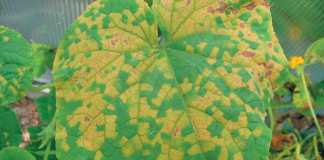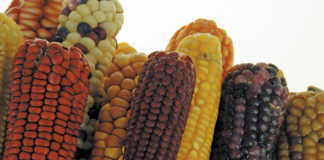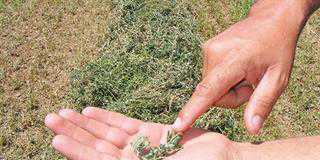In South Africa, citrus is divided into four groups for marketing and production purposes: oranges, grapefruit, lemons and soft citrus (mandarins). However, there’s often confusion when it comes to the names of different types of citrus fruit, and the terms used by farmers and marketing people can differ.
SOFT CITRUS |
|
| Cultivar | Harvest Period |
| Satsum: Earliest ripening of the soft citrus varieties, but with average to poor flavour. | March to end April. |
| Nova: Medium to large fruit with deep orange flesh and juicy, tender and sweet segments. | April to mid-May (hot areas), May to mid-June (colder areas). |
| Clementine: The world’s premier mandarin. Easy to peel. If grown in single blocks away from cross-pollinating varieties, the fruit is seedless. When mature, the peel turns bright orange. The fruit has a distinctive sweet taste and flavour. | Mid-April to end June. |
| Minneola: Grapefruit-tangerine hybrid. The mature fruit is deep orange. It’s juicy, aromatic and has a good tangy flavour. | Mid-May to end June (hot areas), mid-June to end July (colder areas). |
| Tambor: Generally difficult to peel. Pulp tender and very juicy. Fruit medium-sized and slightly flattened at the stylar end, where a small navel often forms. | End June to early August. |
| Nadorcott: Easily peeled, the rind turns deep orange at maturity. Seedless when grown away from other cross-pollinating varieties. | June to August. |
| Main production areas | Western Cape, Eastern Cape |
| Grapefruit | |
| Cultivar | Harvest Period |
| Marsh: The fruit is large, white and virtually seedless. Suitable for fresh consumption in segments and for juicing. | End March to mid-June. |
| Rosé: Pale-pink flesh. Skin is yellow with a red blush. | Mid-April to end June. |
| Star Ruby: Red to deep golden yellow rind. Flesh is deep red and has high juice content and sweet flavour, making it suitable for those who find the taste of other grapefruit too sharp. | Mid-April to end June. |
| Main production areas | Mpumalanga, Limpopo, KwaZulu-Natal, Eastern Cape. |
| LEMONS | |
| Cultivars | Harvest Period |
| Eureka: Has a smooth rind with a thin to medium thickness, a high acid level and juice content. | Mid-February to mid-July (hot areas), mid-March to mid-August (colder areas). |
| Main production areas | Eastern Cape, Mpumalanga, Western Cape, Limpopo, KwaZulu-Natal. |
Citrus fruit is easy to identify but there are many types. These are differentiated as cultivars and varieties. A contraction of the phrase ‘cultivated variety’, a cultivar is a group of cultivated plants with distinct characteristics. We’ve provided lists of common citrus cultivars here. For marketing purposes, variety is used in a slightly different way, to describe fruit with similar characteristics often of more than one cultivar.
The terms ‘ripe’ and ‘mature’ also mean different things. A mature fruit is fully grown while ripening describes the changes that occur within the fruit between maturity and decay. These usually involve softening and a change in colour. Phenology is the study of the timing of events in the life cycle of plants (and animals).
Knowledge of citrus phenology is essential to understanding the practices and actions employed in citrus production. For example, fertilisers must be applied at certain times to optimise flowering, fruit development and maturation.
Citrus Cultivars
|
Oranges
|
|
| Cultivar | Harvest Period |
| Navel: Medium to large seedless fruit with small embedded navel at the stylar (opposite the stem) end. Easily peeled with soft-fibre segments. | March to June |
| Late Navel: Late ripening selections. | End May to end July. |
| Tomango: Small, good quality fruit, with tender, juicy flesh. | May and July. |
| Shamouti: Medium to large oval-shaped fruit. Distinctive fragrance and flavour. | June and July |
| Midknight: Large fruit, good internal quality. Bears more heavily inside the tree canopy. | Mid-July to mid-August (hot areas); August to mid-September (colder areas). |
| Delta Seedless: Medium-size, seedless fruit of good quality with a smooth rind. | Mid-July to end August (hot areas); end July to early September (colder areas). |
| Valencia: Medium to large fruit, roundish in shape with a well-coloured, moderately thin rind. The relatively high acid and sugar content produce a delicious taste. Ideal for juicing. | July to end September (hot areas); mid-July to mid-October (colder areas). |
| Main production areas | |
| Navel: Eastern Cape, Limpopo, Western Cape, Mpumalanga. | |
| Valencia: Eastern Cape, KwaZulu-Natal, Limpopo, Mpumalanga, Western Cape. | |
| Mid-seasons: Limpopo, Mpumalanga. | |
Consider the development cycle of a Valencia orange tree. Remember that the phenology of various cultivars will differ slightly, as seen in the harvest times in the cultivar tables.
- May to July: Flower induction/initiation. This is when the plant gets ready to produce flowers; a process that can’t be seen with the naked eye.
- August to mid-September: Flowering. The flowers of a plant that produces edible fruit are called blossoms. The fruit develops from fertilised flowers.
- Mid-September to November: Cell division and fruit set. During this period the fertilised flowers develop seed, the fruit begins to grow and the cells in the fruit increase in number.
- December to mid-February: Cell enlargement and fruit growth. The cells and the fruit continue to grow.
- Mid-February to September: Fruit maturation and further growth. The fruit increases in size and matures internally, which means the flavour, sugars and acids reach their optimum levels.
- July to September: Harvesting.
Citrus season
The citrus season is the period from the beginning of flower initiation to the harvest. The season is generally from the beginning of August to the end of the following July, although harvesting may extend to September and October for late cultivars.
For more information, contact the Citrus Growers’ Association of Southern Africa on 031 765 2514 or at [email protected].
Sources: Cultivating Citrus, compiled by the Directorate Agricultural Information Services, Department of Agriculture, in co-operation with the ARC-Institute for Tropical and Subtropical Crops; the Citrus Academy, plantzone.co.za; sunkist.com.
Contact the Citrus Academy at 031 313 3364, or at [email protected].













